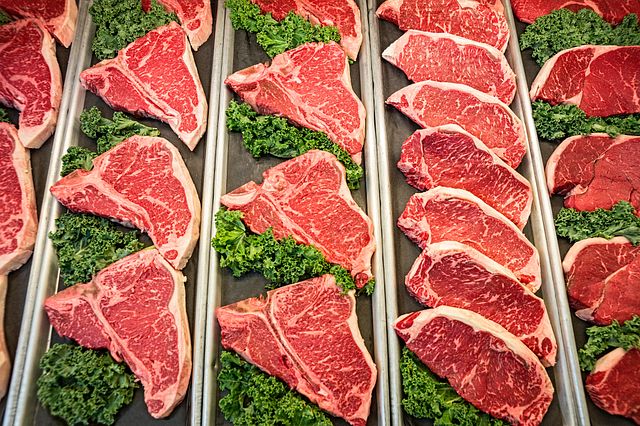
Agriculture and Natural Resources
The talk of the beef industry the past several years has been associated with beef demand as consumers continue to purchase beef despite the price continuing to increase. One of the factors influencing beef demand is quality grade. The three primary quality grades of beef are Prime, Choice, and Select with Prime and Choice beef being preferred by most domestic consumers. Given the strong demand for higher quality grade beef, the industry has made changes to increase the quantity of beef grading Choice and Prime via genetics and feeding practices.
Figure 1 displays the percentage of beef grading Prime, Choice and Select from 1994 to 2024 on an annual basis. The figure clearly shows a shift in 2008 and 2009 when the quantity of Choice beef began to increase and the quantity of Select beef began to decrease. Similarly, the quantity of Prime grading beef began to gain steam in 2014 and has not slowed over the past decade. To provide a clearer perspective, the average annual percentage of beef grading Choice or higher from the year 2000 to 2010 was 62 percent compared to 85 percent of beef grading Choice or higher from 2020 through 2024 on average. The picture is similar for 2025 as nearly 87 percent of graded beef has graded Choice or higher through the first half of the year.
The reason grading percent is important is because it contributes significantly to beef demand. When an analyst speaks of the taste of beef and consumer preference for the flavor of beef compared to pork and poultry, the intramuscular fat that determines quality grade is a major contributor to this flavor. There are certainly several characteristics that are important to consumers when it comes to purchasing and consuming beef, and several of them are influenced by intramuscular fat that determines quality grade. This makes one consider the question if industry participants can continue to increase the percentage of beef grading Choice or higher.
Two of the major contributing factors to more beef grading Choice or Prime has been selecting genetics with a greater potential to produce cattle that grade. At the same time, feeding cattle for a longer duration has also contributed to an increase in beef grading percentage. Given these have been two primary contributors, it is not known how much further these two factors can contribute to grading percentage trends. They certainly have the potential to continue contributing, but moving from 85 percent grading Choice or higher to 90 percent will be much more difficult than moving from 62 percent to 85 percent.
What seems obvious here is that a higher percentage of beef grading Choice or higher has supported beef prices as they have reached record levels in 2025. The preferred and desirable eating experience that comes with a higher quality grade has consumers coming back despite increasing retail prices for beef items. This does not mean consumers will continue to make these same purchasing decisions with ever increasing retail beef prices, but consumers are willing to pay more for higher quality grade beef products than lower quality grade beef. Thus, one is more likely to maintain a consumer base with a really good product at a high price than a lower quality product at a lower price.
One caveat should be included as there is still a market for Select grade beef. Beef that grades Select is still preferred in some markets, and has a position in the market. However, its role in the market has diminished relative to where it was a couple of decades ago. This then brings up the question of “Who wants to be known as a cattle producer producing beef going into fine dining establishments versus the producer producing beef that is only good for grind and low valued cuts?”
Figure 1. Percentage of Beef Grading Prime, Choice, and Select (1994-2024)
